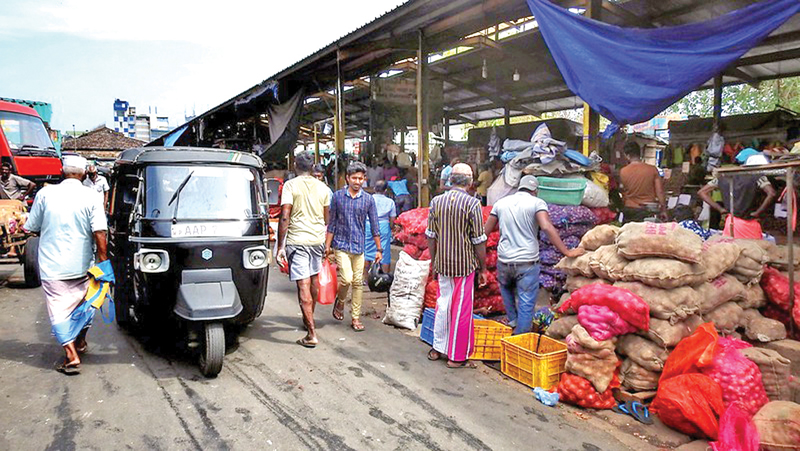Since the Easter Sunday terror attacks and thereafter, the global pandemic and the economic crisis, the poverty level in Sri Lanka has increased at an alarming level pushing a large number in the middle income bracket below the globally accepted poverty line.
The global poverty line is currently at $2.15 per person per day, indicating extreme poverty. This line is used to track progress in reducing poverty over time and to identify those who are struggling to meet basic needs.
However, the official poverty line in Sri Lanka which tracks the minimum expenditure per person per month to fulfill the basic needs at the national level for March, 2025 is Rs. 16,302 which is a marked decline from the Rs. 16,334 reported in January and Rs. 16,318 in February this year, according to the Department of Census and Statistics, Sri Lanka. The declining trend in the country’s poverty line could be seen from 2024 taking into consideration the poverty line of the first three months of the year of Rs. 17,014, Rs. 16,975 and Rs.16,619 as against Rs. 16,334, Rs. 16,318 and Rs. 16,302 reported during the first three months this year although there had been a marginal increase this year compared to the latter half of last year.
Among the districts, Colombo ranked the highest during the first three months this year followed by Gampaha and Kalutara in the minimum per person expenditure per month index.
The poverty line in the Colombo district during the first three months this year was Rs. 17,617, Gampaha -Rs.17,599 and Kalutara – Rs. 17,582.
The lowest minimum per person expenditure per month this year were reported in the Kilinochchi and Trncomalee districts.
The minimum per person expenditure per month in the Kilinochchi district in January Rs. 15,780 to Rs. 15,750 in March this year while the poverty level in the Trincomalee district declined from Rs. 15,915 in January to Rs. 15,884 in March this year.
The National Consumer Price Index (NCPI) is a macroeconomic indicator compiled to measure inflation and is more precise for estimating the Official Poverty Line (OPL).
The index adheres to methodologies consistent with international best practices and is calculated using the prices gathered from all nine provinces of Sri Lanka. The first base year for the NCPI was 2013 (Base: 2013=100).
District level official poverty lines have been revised based on spatial price indices developed using data from the HIES-2019. National and District level poverty lines are calculated on an ongoing basis using the NCPI computed monthly by the DCS.
The poverty rose since 2019, from 11.3 percent to 12.7 percent in 2020, adding over 300,000 new poor in that period. It continued to increase in 2021, and it then doubled between 2021 and 2022, from 13.1 to 25.0 percent ($3.65 per capita, 2017 PPP). This increase has added an additional 2.5 million people into poverty in 2022, according to the World Bank.
Households have been impacted on different fronts as prices rose by 46 percent in 2022, jobs in services and industry contracted (pushing workers to lower-paying agricultural jobs), remittances declined, and incomes from agriculture were negatively impacted by the ban on chemical fertilisers in 2021.
Faced with falling incomes, many households turned to negative coping mechanisms, which deteriorate human capital outcomes. Data shows that households experiencing food insecurity are reducing their spending on health and education. Rising food insecurity has also led to increases in malnutrition and stunting – up from 7.4 percent in 2021 to 9.4 percent in 2022.
The uncertain political and economic situation and limited access to essential goods and services also contributed to monetary and multidimensional deprivations. For example, fuel shortages and transport disruptions caused additional school closures in 2022, likely contributing to human capital losses after two years of interrupted learning due to Covid-19.
Eradicating extreme poverty for all people everywhere by 2030 is a pivotal goal of the 2030 Agenda for Sustainable Development. Extreme poverty, defined as surviving on less than $2.15 per person per day at 2017 purchasing power parity, has witnessed remarkable declines over recent decades.






